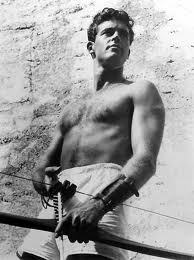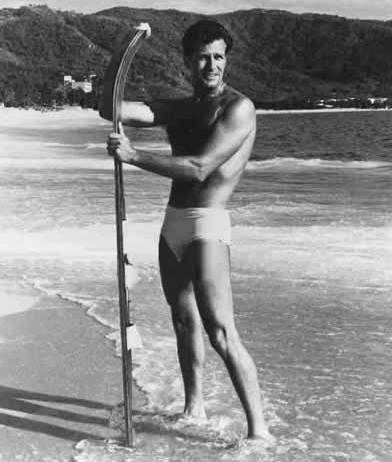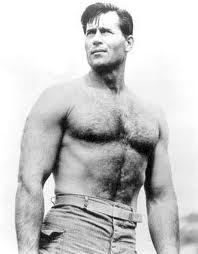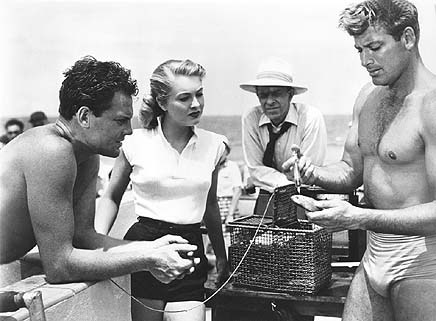I've seen Season 3 of Big Mouth, and I'm happy to report that it's become much more LGBTQ-inclusive. And inclusive of everybody else. Among the supporting cast members are a kid in a wheelchair and a kid with autism.
Big Mouth is about a group of middle schoolers negotiating puberty, guided/ egged on by their hormone monsters: Maurice for most of the boys and Connie for most of the girls, although Nick gets Connie as well, leading him to question whether he is too feminine.
I thought that the hormone monsters were just personifications of the pubescents' interior state, but evidently they have an external reality. There's a whole Human Management bureaucracy, with procedural manuals, meetings, and office parties.
While the monsters push for wild sexual excess, the kids are mostly worried about holding hands and "does he like me or like like me?" Not that there isn't raunch:
When Jessi tries to get her first orgasm, we learn an awful lot about the vagina. Way more than I wanted to know.
The third season moves away from "I'm going through changes" to explore some of the issues of contemporary teenagers: Attention-Deficit Disorder, cell phone addiction, nude selfies, sexual harassment, "hot or not" lists. The "Queer Eye" Fab Five show up to give Coach Steve a makeover.
There are three characters of gay interest:
1. Andrew Glouberman, whose extra-big penis causes him anxiety and consternation (yes, we see it).
2. Matthew, the swishy gay kid, has been previously consigned to making snarky comments. Now he gets a boyfriend.
"You're going to put it in him!" Maurice exclaims. But for middle schoolers, just holding hands is enough.
3. Jay, who doesn't seem to have a hormone monster even though he masturbates a thousand times a day, kissed Matthew at the end of Season 2. This season he comes out as bisexual, which upsets his friends; they don't mind bisexual girls, but the thought of a guy finding them attractive is creepy.
But Jay doesn't actually date anyone other than pillows and couch cushions; most of his plots involve dealing with his negligent parents and abusive older brothers.
Maybe in Season 4.
See also: Big Mouth: The Hormone Monster Strikes Again
Beefcake, gay subtexts, and queer representation in mass media from the 1950s to the present
Nov 5, 2019
From Muscle Beach to the Cimarron Strip: TV Westerns

By the time I started watching TV in the 1960s, the Western was stale, outdated, staggeringly unhip; my friends and I could stomach only those few that involved a flashy new gimmick, like Wild Wild West or Alias Smith and Jones. But for the Boomers growing up in the 1950s, they were as iconic as Pinky Lee and Father Knows Best.
The Western heroes were usually the discovery of gay talent agent Henry Willson, so they were gay, bi, or at least gay-friendly. They usually wore full leather, buckskin, or other less-than-revealing garb, but they were not averse to revealing stunning physiques for the movie magazines, and even for the AMC’s proto-gay Physique Pictorial. Guy Madison (who went so far as to pose nude) in The Adventures of Wild Bill Hickock (1951-56)
Rugged movie star Hugh O’Brian in The Life and Legend of Wyatt Earp (1955-61);
Clint Walker of Cheyenne (1955-63).
William Smith of Laredo
Plus:
Richard Boone of Have Gun, Will Travel (1957-63)
Robert Horton of Wagon Train (1957-65)
Rory Calhoun of The Texan (1958-60)
George Montgomery of Cimarron City (1958-60)
Scott Brady as Shotgun Slade (1959-61)
The Western hero traditionally displayed little heterosexual interest: dames were characteristic of an emasculating civilization, along with government, education, opera, and church. Instead, they had a “sidekick,” a life partner of the same sex, usually someone of inferior rank due to race, age, or socioeconomic class, who provided an emotional or spiritual energy. The sidekick is an essentially American phenomenon, and its homoerotic import has been noted for at least thirty years, since Love and Death in the American Novel.
Most of the sidekicks of the 1950s were elderly, corpulent, or buffoons, perhaps because clowns minimze the homoerotic impact of their devotion. The fat, hee-hawking Andy Devine, later on Andy's Gang, played “Jingles,” Guy Madison’s sidekick in The Adventures of Wild Bill Hickock.
Or they were father and son, as in The Rifleman.
But we can locate several same-sex partners whose homoerotic bond was not miminized:
Indian agent Tom Jeffords (future Days of Our Lives hunk John Lumpton), who fell in love with...um, I mean befriended...handsome, muscular Chief Cochise (Michael Ansara) in Broken Arrow (1956-57).
John Bromfield as The Sheriff of Cochise (1956-60) with Stan Jones his faithful deputy.
John Smith and Robert Fuller of Laramie.
Yancy Derringer (1958-59), an ex-Confederate soldier turned gambler played by Jock Mahoney, and X Brands as his Native American companion.
Most of the sidekicks of the 1950s were elderly, corpulent, or buffoons, perhaps because clowns minimze the homoerotic impact of their devotion. The fat, hee-hawking Andy Devine, later on Andy's Gang, played “Jingles,” Guy Madison’s sidekick in The Adventures of Wild Bill Hickock.
Or they were father and son, as in The Rifleman.
But we can locate several same-sex partners whose homoerotic bond was not miminized:
Indian agent Tom Jeffords (future Days of Our Lives hunk John Lumpton), who fell in love with...um, I mean befriended...handsome, muscular Chief Cochise (Michael Ansara) in Broken Arrow (1956-57).
John Bromfield as The Sheriff of Cochise (1956-60) with Stan Jones his faithful deputy.
John Smith and Robert Fuller of Laramie.
Subscribe to:
Comments (Atom)








